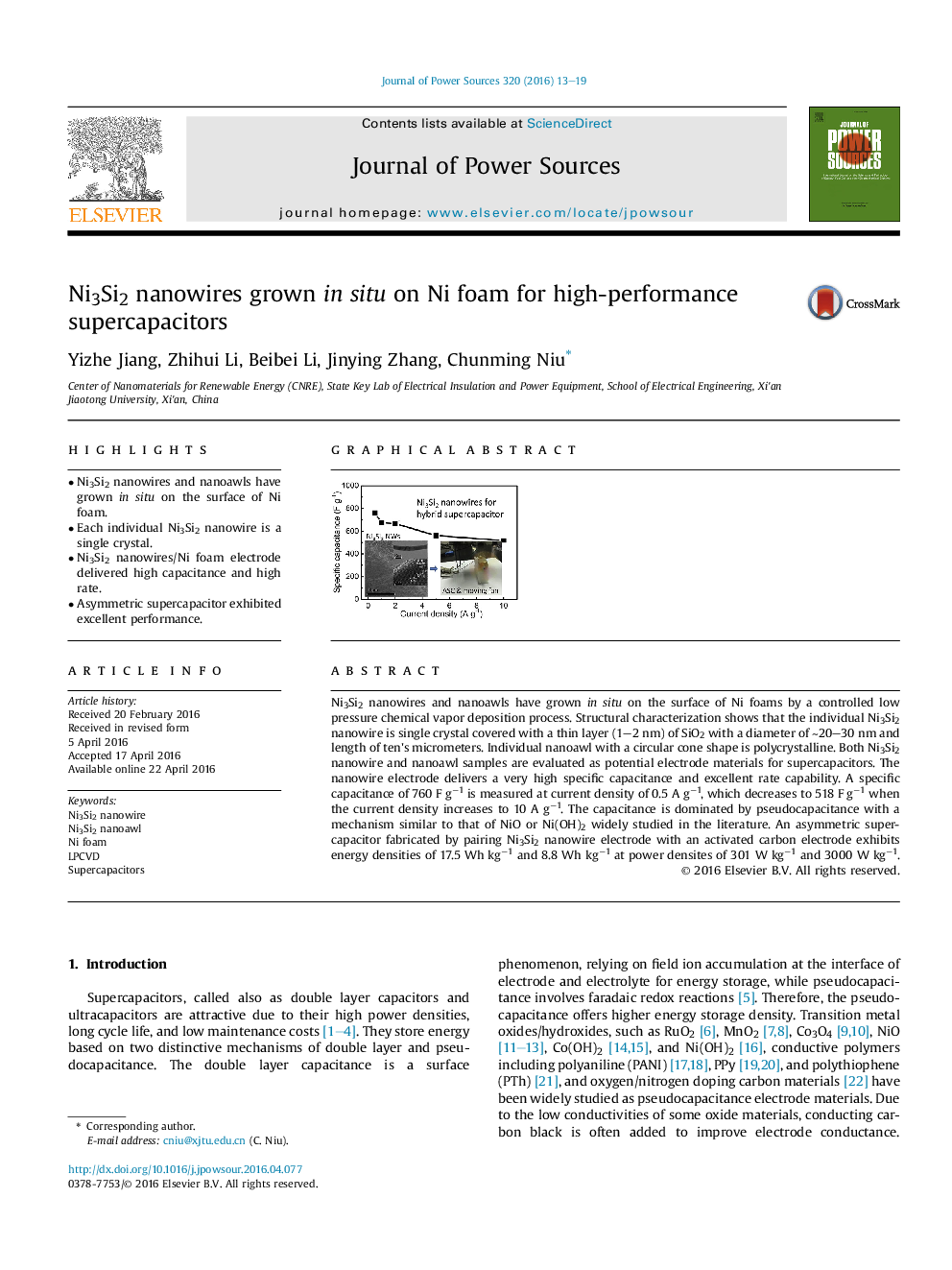| Article ID | Journal | Published Year | Pages | File Type |
|---|---|---|---|---|
| 1286032 | Journal of Power Sources | 2016 | 7 Pages |
•Ni3Si2 nanowires and nanoawls have grown in situ on the surface of Ni foam.•Each individual Ni3Si2 nanowire is a single crystal.•Ni3Si2 nanowires/Ni foam electrode delivered high capacitance and high rate.•Asymmetric supercapacitor exhibited excellent performance.
Ni3Si2 nanowires and nanoawls have grown in situ on the surface of Ni foams by a controlled low pressure chemical vapor deposition process. Structural characterization shows that the individual Ni3Si2 nanowire is single crystal covered with a thin layer (1–2 nm) of SiO2 with a diameter of ∼20–30 nm and length of ten's micrometers. Individual nanoawl with a circular cone shape is polycrystalline. Both Ni3Si2 nanowire and nanoawl samples are evaluated as potential electrode materials for supercapacitors. The nanowire electrode delivers a very high specific capacitance and excellent rate capability. A specific capacitance of 760 F g−1 is measured at current density of 0.5 A g−1, which decreases to 518 F g−1 when the current density increases to 10 A g−1. The capacitance is dominated by pseudocapacitance with a mechanism similar to that of NiO or Ni(OH)2 widely studied in the literature. An asymmetric supercapacitor fabricated by pairing Ni3Si2 nanowire electrode with an activated carbon electrode exhibits energy densities of 17.5 Wh kg−1 and 8.8 Wh kg−1 at power densites of 301 W kg−1 and 3000 W kg−1.
Graphical abstractFigure optionsDownload full-size imageDownload as PowerPoint slide
